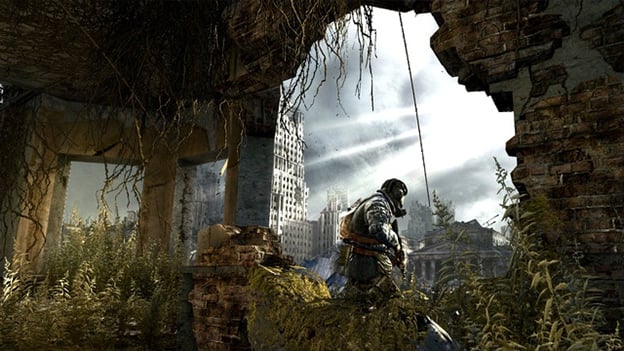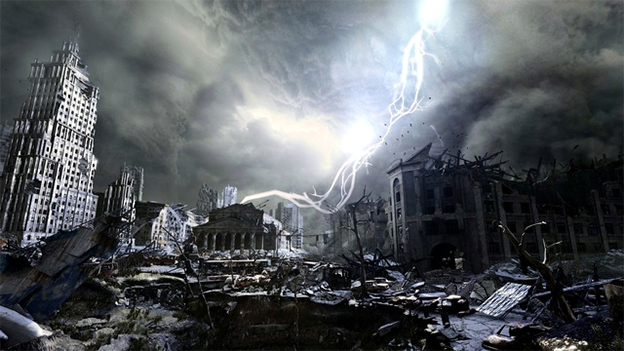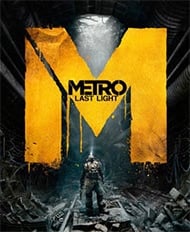Take A Ride On The Metro
Having never played the original Metro 2033, I had no idea what to expect from Metro: Last Light. Sure, I knew the basics – post-apocalyptic, dystopian, survival horror – all the standard ingredients for a successful single-player FPS. I mean, it worked for Fallout, right? But fortunately, that is where the similarities end and where the original experience of Metro: Last Light begins.
The first thing to understand about the Metro series is that it is based in literature. The concept and story of the game is derived from an immensely popular series of Russian books, written by Dmitry Glukhovsky, who has collaborated on both Metro games. This narrative storytelling approach, coupled with the pulse-pounding survival horror gameplay and atmosphere, is a winning combination that you are unlikely to find anywhere else.
You play as Artyom, the main protagonist from both the books and original game. He has been promoted to the rank of Ranger, and Last Light opens with him set upon a mission to find a “Dark One” that has survived a missile attack intended to wipe out the “Dark Ones” for good. Of course, the mission goes awry. Through a hallucination, the Dark One shows Artyom how it survived the attack, which knocks him out. The unconscious Artyom and the surviving Dark One are both captured by an enemy patrol, thus setting into motion the events of Metro: Last Light.
The story of Metro: Last Light retains its literary roots through narrated loading screens that function almost as a diary of the main character. In addition to making load times much less boring, this propels the story forward by giving you access to the thoughts of your character, making it a more personal experience.
However, other than the voiceovers, Metro: Last Light prefers to deliver story elements through interactive in-game sequences, instead of obligatory cutscenes. For example, early on in the game you find yourself in a plane that crashed into Moscow the day of the nuclear attacks. As you would expect, the aircraft is littered with the skeletal remains of the passengers, which is creepy enough all by itself. But as you move through the plane, you begin to have split-second hallucinations of the screaming passengers, ultimately culminating in a full-fledged vision of the jet crashing. You see this from the perspective of the cockpit. These hallucinations deliver story elements in a much more organic way than a cutscene ever could, keeping you involved in the story, instead of separating you from it.
But what story could survive without a convincing and immersive setting? Thankfully, Metro: Last Light has this in spades. The world of the Metro is incredibly detailed. Stations are bustling with survivors; shops and eateries are present in the dank and dirty underground, and dilapidated tunnels show the scars of countless battles fought there. The ambience of the Metro is immersive to say the least, and so many details are crammed into the environment that it will take you several playthroughs to see everything Metro: Last Light has to offer.

To further the immersion, Metro: Last Light implements several gameplay elements that stray away from the standard FPS formula. Most HUD components have been eliminated, leaving only the ammo counter for your weapon, which is also removed in harder difficulties. But don’t worry, you’re not flying blind, Metro: Last Light just integrates game elements that would normally be on your HUD in different, more organic ways.
For example, the air on the surface of Moscow is toxic. You must wear a chemical mask to survive, and the mask requires filters to continue to work properly. Instead of standard time-counter cluttering your screen to tell you when your filter will run out, your watch displays the amount of time you have left. Your handy-dandy watch also has a light sensor, which tells you if you are concealed in darkness, or if enemies can see you.

Additionally, there is no health meter, so you must rely on visual cues such as blurred vision, blood, and an accelerated heartbeat (represented by vibration through your controller) to know when you are hurt. Your clipboard can be brought up to show any notes you have on your current objective, and it also contains your compass. All of these intuitive alternatives to a static HUD add to the immersive quality of the game, making it more about the story and gameplay and less about the bells and whistles of a standard FPS.
But for all its successes, Metro: Last Light is not without flaws. Graphically, the game suffers some setbacks. While the world is intricate and detailed, there are times when textures load slowly in spots, which makes for appearing signs and odd colorations that flicker when you move. Mobile parts of the environment can magically move through solid objects and shadows are oddly pixelated.
However, the most notable visual hiccups are in the character models and animations. Immediately noticeable in the game, the characters look as though they are separated from the environment, almost like they are overlaid. Some characters move strangely out of sync with their voices and other sounds they create in the environment. Animations can be jerky, and occasionally downright weird. On several occasions, I saw a character flicker out of place, or turn in an odd way that made me raise an eyebrow. Collision detection was also an issue at points, and when I walked into another character I found myself inside of them, looking at all their jagged edges.
None of the visual issues were game-breaking by any stretch of the imagination, but I could definitely see the hardware limitations shining through the ambitious graphical design.
Along with spotty visual issues, the sound of Metro: Last Light has its weak and strong points as well. For the most part, the sounds of the Metro are creepy and well timed. Issues only crop up when you are engaged in conversation with an NPC, or watching characters within the Metro. Character actions don’t always line up with their sounds (as I mentioned before) and this can break the immersion. However, this is a small issue, and doesn’t really detract from the game’s sound as a whole.

The orchestral score is dark and fitting, and sports acoustic guitar in some spots. The blend delivers a down-trodden bluesy feel, which is appropriate given the circumstances. Additionally, the ambient sound of the Metro is spot-on. Scaling music intensifies already tense situations, and the echoing tunnels amplify the creepy sounds of would-be mutant attackers.
Throughout your time in the Metro, you will fight for air and ammunition, fight against Fourth Reich Nazis and Communists, and fight for your continued existence. Along the way you will be treated to one of the most intense and immersive environments in gaming, backed up by an excellent story that shines throughout the game and tells a unique tale that is both evenly paced and compelling.
This is one of the most original games I have ever played. It steps away from industry gameplay and structure standards, which could have been disastrous, but pulls it all together in a tightly woven experience.
In the end, Metro: Last Light emerges from the dark underground as an exceedingly enjoyable single-player experience and one of the best games this year. So far.
RATING OUT OF 5 RATING DESCRIPTION 3.5 Graphics
Overall, the graphics are okay, but glitchy character models and minor environmental issues keep it from reaching its true potential. 4.5 Control
Excellent gameplay is punctuated by the original use of HUD elements that bring immersion to the forefront. 3.7 Music / Sound FX / Voice Acting
Character sounds don’t always line up with what you see, but the brooding score and creepy environmental effects deliver on the rest of the soundscape. 4.5 Play Value
A unique and original experience that will take several playthroughs if you want to see and do everything this game has to offer. 4.0 Overall Rating – Great
Not an average. See Rating legend below for a final score breakdown.
| Review Rating Legend | |||
|---|---|---|---|
| 0.1 – 1.9 = Avoid | 2.5 – 2.9 = Average | 3.5 – 3.9 = Good | 4.5 – 4.9 = Must Buy |
| 2.0 – 2.4 = Poor | 3.0 – 3.4 = Fair | 4.0 – 4.4 = Great | 5.0 = The Best |
Game Features:
